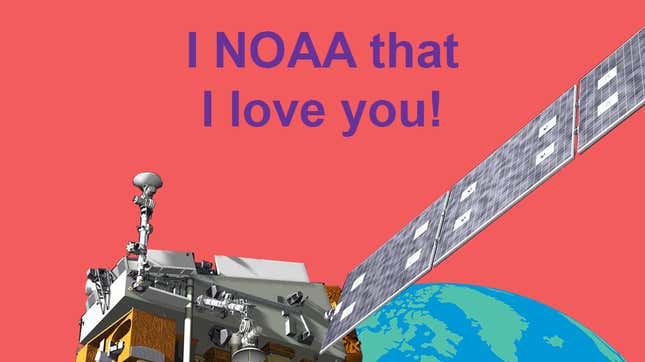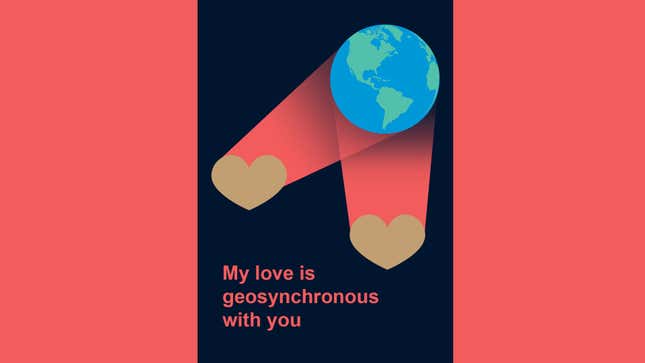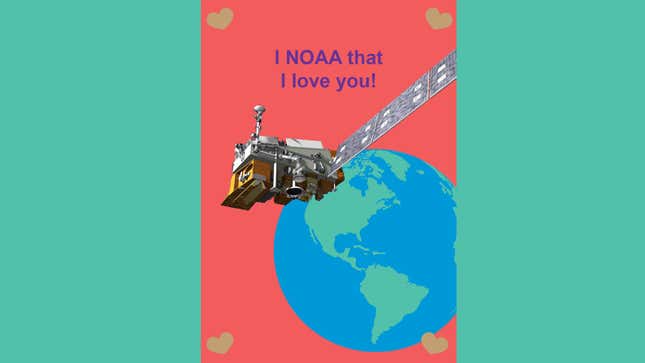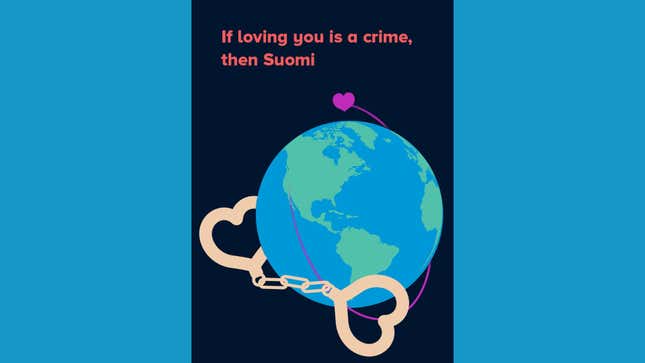
Ever since I was a little girl, one of my favorite things about Valentine’s Day has been the cards. I would love to decorate my little shoebox every year and check out all the Valentines I would get from my classmates. The best ones were, of course, the ones that were not like the others. Thumbs up if they were both nerdy and cheesy!
Well dear readers, NOAA’s National Environmental Satellite, Data, and Information Service has just made some absolutely lovely satellite-themed Valentines that are sure to win you praise and love. Plus, you can also impress your Valentine with some satellite and NOAA facts. Don’t worry, we’ll help you with that one. Intelligence is sexy!
Check out NESDIS’ Valentine card collection in the next couple of slides.






